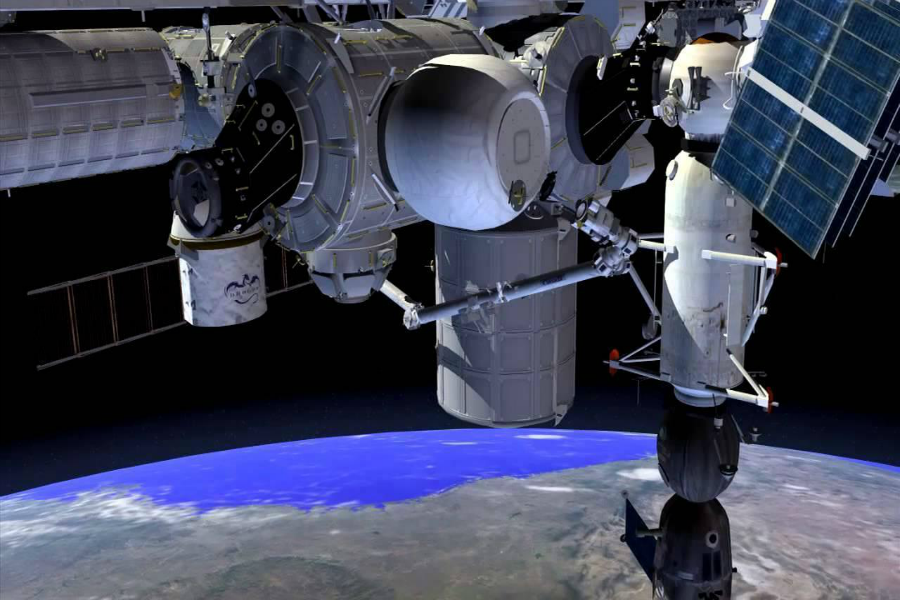Why was an inflatable pod just attached to the space station?
Loading...
Early on Sunday morning, humankind came one step closer to building a portable habitat for Mars, as an inflatable room was attached to the International Space Station where it will be tested for durability over the next two years.
The Bigelow Expandable Activity Module, or BEAM, is a 3,086-pound pod made of layers of fabric and Kevlar-like material that one day might be able to house astronauts during deep-space missions, and possibly even space tourists on sightseeing trips.
Developing an expandable space shelter would be a boon to the future of space exploration, says NASA, because this type of structure offers abundant living and working space while being much lighter and more compact than a metal structure. This makes inflatable pods easier to fit onto rockets and cheaper to launch.
“When we’re traveling to Mars or beyond, astronauts need habitats that are both durable and easy to transport and to set up,” NASA wrote in a Tumblr post. “That’s where expandable technology comes in. BEAM is one of the first steps to test expandable structures as a viable alternative to traditional space habitats,” the space agency said.
BEAM was designed and built by Las Vegas-based company Bigelow Aerospace, founded nearly 20 years ago by Robert Bigelow, owner of the Budget Suites of America hotel chain. It will be inflated in May from its compact size of about 7 feet long and slightly less than 8 feet in diameter to its pressurized dimensions of 13 feet long and 10.5 feet in diameter. When fully expanded, BEAM should be able to hold 4,227 gallons, according to NASA.
During its two-year trial, sensors inside the pod will test how well it resists space debris, temperature fluctuations, and solar and cosmic radiation. BEAM will be sealed off from the rest of the space station and visited by astronauts only several times a year, when crew members will enter the pod for a few hours at a time to collect data and check the conditions inside.
“It’ll be the first time human beings will actually step inside this expandable habitat in space,” said retired astronaut George Zamka, who has worked for Bigelow, according to USA Today. “It’ll feel pretty beefy. … There won’t be this sense of it being like a balloon,” he said.
After two years, BEAM will be ejected from the space station and will burn up as it re-enters the Earth’s atmosphere.
The inflatable shelter was delivered to the space station, a football-field-size lab orbiting 240 miles above Earth, on April 10 in a capsule called Dragon, which was launched aboard a Falcon 9 rocket operated by private company SpaceX. BEAM was part of a 7,000-pound supply delivery, the eighth load of cargo SpaceX has shuttled to the lab.
Once Dragon was docked to the space station, astronauts and NASA ground crew used a robotic arm, called Canadarm2, to lift BEAM out of the Dragon capsule and attach it to one of the space station’s nodes, where it will wait to be expanded to its full size.
Bigelow, which built BEAM under a $17.8 million contract with NASA, launched two inflatable test pods into orbit within the last six years. Both are still in space and intact.











